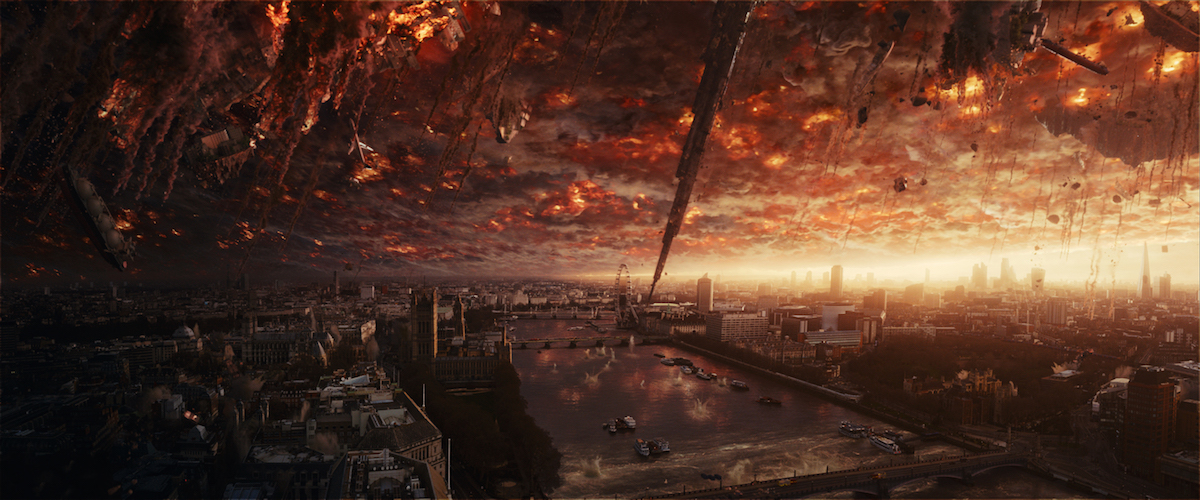
The most savvy entertainment seekers would probably agree that part of the attraction lies in the attempt to escape reality—whether that be through virtual reality headsets or other, more traditional means. And when it comes to summer movies, “traditional” often translates to “science fiction.”
Cue the arrival this summer of Ghostbusters, Star Trek Beyond and, of course, Independence Day: Resurgence, which hits theaters on Friday.
Sure, Independence Day’s reality may not be the one you want to experience first-hand—one where the planet is once again under attack from extraterrestrials—but this won’t be the first time its subject matter reaches audiences in the midst of a wave of genre movies. When the first Independence Day hit the silver screen in the summer of 1996, TIME reported on yet another summer of sci-fi action, with flicks such as The Arrival, Phenomenon, and Mission Impossible.
Get your history fix in one place: sign up for the weekly TIME History newsletter
With all the momentum for that summer’s genre movies—and the appeal of the original ID4, which Richard Corliss called a “vigorous, retro-’70s disaster movie”—Steven Spielberg told TIME he wouldn’t be surprised if Independence Day earned up to $300 million in the box office. It earned almost exactly that domestically.
But what was behind the trend? TIME explained:
Consider this: the U.S. stands unchallenged as a world power, is not at war, enjoys a high standard of living and has relatively stable rates of interest and unemployment; yet polls continue to show a profound malaise. People feel crushed by government, abused by corporate employers, baffled by computers. “Technology is moving fast-forward,” says [X-Files creator Chris] Carter, “and we rarely get a chance to understand the implications. Most of us can’t program our VCR. We have the tools of science in our hands, and we’re afraid of them.”
Today, the American theology of the ’50s—the middle class’s belief in the government’s bland benevolence—is a dying creed. Rising expectations have given way to escalating suspicions about those in power. It isn’t only the Montana Freemen who believe that we have met the enemy and he is U.S. “We know we’ve been lied to,” says Bryce Zabel, Dark Skies‘ co-creator, “about Vietnam, Watergate, Iran-contra.” Moreover, as ID4‘s [director Roland] Emmerich notes, “every generation creates its own mythology. Now the mythology centers on the government’s hiding the dead alien bodies it discovered at Roswell.”
The theory is that, as the late sci-fi editor David Hartwell told TIME in 1996, the “alien represents metaphorically, what’s in the real world.”
The same idea holds true today.
Today, says Istvan Csicsery-Ronay, English professor at DePauw University and co-editor of Science Fiction Studies, some of the same themes from the original Independence Day—the fear of the outside invader, the craving for a dependable government—are mirrored in Resurgence. The sequel also wraps in technological advances in warfare that have taken place in the last 20 years. But, he says, though sci-fi “can be used to justify, psychologically, things that are politically harder to justify,” these days the genre sometimes drifts away from its power to expose political or social matters, and more into the realm of pure “adrenaline-pumping” fun.
But that doesn’t mean that Independence Day: Resurgence doesn’t offer a window into fear in American society today.
After all, as Csicsery-Ronay says, in the sequel “the mothership is apparently even bigger.”
More Must-Reads From TIME
- The 100 Most Influential People of 2024
- Coco Gauff Is Playing for Herself Now
- Scenes From Pro-Palestinian Encampments Across U.S. Universities
- 6 Compliments That Land Every Time
- If You're Dating Right Now , You're Brave: Column
- The AI That Could Heal a Divided Internet
- Fallout Is a Brilliant Model for the Future of Video Game Adaptations
- Want Weekly Recs on What to Watch, Read, and More? Sign Up for Worth Your Time
Contact us at letters@time.com